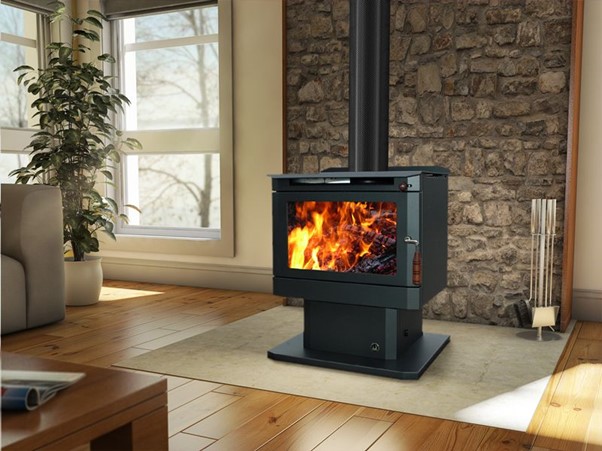Table of Contents
Have you ever been captivated by the crackling sound and the mesmerising glow of a wood-burning fireplace? Or perhaps the welcoming scent of burning timber takes you back to a simpler time? While these traditional wood fireplaces possess a unique charm, they also come with their own set of safety and maintenance considerations. So, what should we know about our beloved hearths to keep them aglow, winter after winter, without compromising on safety?
In this comprehensive guide, we shed light on the various aspects of wood fireplaces maintenance and safety. Whether you’re a new homeowner or simply an enthusiast, this post is brimming with imperative knowledge to keep your wood fireplaces running efficiently and safely.

Understanding the Core Elements of a Wood Fireplaces
Behind the cosy ambiance of a wood fireplaces, there’s an intricate arrangement of components that each need to be regularly serviced and maintained. First, we have the firebox – the visible area where the fire blazes. Then there’s the damper, the piece that can open and close the chimney flue. Lastly, the flue is the passage that channels the smoke, heat, and gases to the outside environment. Knowing these key parts and their placement will help you maintain the fireplace and identify problems if they occur.
Dispelling the Ashes: Routine Cleaning Procedures
The key to an efficiently running fireplace lies in its cleanliness. Regular removal of ash prevents it from smouldering and creating an unwelcome smoky odour. But how often should you engage in this task? And are there particular tools for the job? Ash also serves a valuable function – when left to a depth of about 1 inch, it can insulate the bed and help your fire burn more evenly. Armed with a shovel, broom, and a metal container with a lid, you’re all set to ensure your fireplace is clean and running efficiently.
Flue Care and Chimney Sweeping: Ensuring Safe Passage
One often overlooked aspect of wood fireplaces maintenance involves the chimney and flue. Creosote, a flammable by-product of burning wood, builds up in your chimney and flue, increasing the risk of a chimney fire. Thus, routine inspection and cleaning are crucial. But when should you call a professional, and what signs suggest your chimney might be due for a sweep? Understanding these finer points is crucial for both efficiency and safety.
Efficient Firewood Selection: Hardwood or Softwood?
A widely debated topic among wood burning enthusiasts is the choice of firewood. Softwoods, as the name suggests, are easier to ignite but burn out faster. Hardwoods, on the other hand, provide long-lasting fires but may be harder to light. Understanding the pros and cons of each variety will help you make an informed decision about which is best suited to your needs.
Fire Safety Considerations: Prioritising Health and Well-being
While it’s comforting to sit by the hearth on a cold winter’s evening, it’s vital to keep certain safety parameters in mind. Using a mesh metal screen or glass fireplace door to keep embers in check, regular checks for smoke detectors, and teaching children about wood fireplaces safety are part of responsible fireplace ownership.
The Environmental Impact: A Conscious Burner’s Guide
When we use wood as fuel, are we being environmentally conscious? Understanding the impact of wood-burning wood fireplaces on air quality and how to reduce their emissions can contribute to a greener living environment. By using well-seasoned wood and ensuring your fireplace is energy-efficient, you can enjoy your cosy fireside evenings guilt-free.
Conclusion:
Navigating the realm of wood fireplace maintenance and safety may seem daunting, but with this guide, we hope to have made the journey smoother. Remember, regular cleaning, a keen eye for potential hazards, selecting the right type of wood, and keeping environmental concerns in mind are the fulcrums of responsible wood fireplace ownership. With proper care and attention, your beloved hearth can provide warmth and comfort for many more winter nights to come – safely and efficiently.



